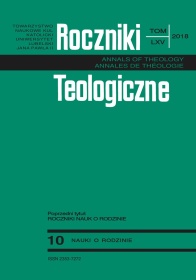Aktywność fizyczna kobiet i mężczyzn w czasie wolnym od pracy
Abstrakt
Wprowadzenie. Analiza literatury ukazuje zróżnicowane, a niekiedy sprzeczne dane dotyczące aktywności fizycznej kobiet i mężczyzn.
Cel. Celem pracy jest porównanie wybranych aspektów aktywności ruchowej kobiet i mężczyzn.
Przedmiot i metody. Przebadano 100 mężczyzn i 100 kobiet dobierając osoby badane „metodą doboru parami” pod względem czterech zmiennych: miejsca zamieszkania, wykształcenia, stanu cywilnego oraz wieku. Posłużono się zbudowanym kwestionariuszem ankiety.
Wyniki. Mężczyźni i kobiety w zakresie pewnych aspektów aktywności ruchowej (zwłaszcza jej form) różnią się, natomiast w odniesieniu do motywów i przeszkód wykazano niewielkie różnice.
Wnioski. Kobiety istotnie częściej jako aktywność ruchową preferują spacery, natomiast mężczyźni bieganie, pływanie, korzystanie z siłowni oraz z sal gimnastycznych do gier zespołowych. Kobiety w dni robocze posiadają znacząco mniej czasu wolnego niż mężczyźni. Jedynym czynnikiem inspirującym do aktywności ruchowej, różnicującym obydwie grupy, jest istotnie częściej występujący u kobiet motyw „dla urody”. Obydwie grupy nie różnią się ze względu na przeszkody utrudniające im podejmowanie aktywności fizycznej, chociaż kobiety częściej stwierdzają brak czasu.
Bibliografia
Aktywność fizyczna Polaków, CBOS, Warszawa 2013.
Aktywność fizyczna Polaków 2017, https://sponsoringsport.pl/raport-aktywnosc-fizyczna-polakow-2017 [10.04.2018].
Chuchra M., Gorbaniuk J., Selected health behaviours in professionally active men and women, „Polish Journal of Public Health” 2017, nr 2, s. 67-70.
Duda B., Charakterystyka aktywności fizycznej osób dorosłych, „Medycyna Sportowa” 2006, nr 6, s. 329-332.
Gorbaniuk J., Chuchra M., Preferencje żywieniowe kobiet i mężczyzn aktywnych zawodowo, „Roczniki Teologiczne” 64(2017), nr 10, s. 161-164.
Góreczka A., Garczyński W., Motywy podejmowania aktywności fizycznej – przegląd literatury, „Heath and Sport” 2017, nr 7, s. 322-337.
Kaźmierczak U., Radzimińska A., Dzierżanowski M., Bułatowicz I., Strojek K., Srokowski G., Zukow W., Korzyści z podejmowania regularnej aktywności fizycznej przez osoby starsze, „Journal of Education, Health and Sport” 2015, nr 5(1), s. 56-68.
Poziom aktywności fizycznej Polaków, KANTAR PUBLIC 2017 s. 4. Ministerstwo Sportu i Turystyki, https://msit.gov.pl/download/1/13795/Analizawynikow2017.pdf [10.05.2018].
Słopiecka A., Kamusińska E., Formy wypoczynku preferowane przez kobiety. „Medycyna Ogólna i Nauki o Zdrowiu”18(2012), nr 1, s. 1-7.
Sport i aktywność fizyczna, Eurobarometr (nr 3.334), Belgia 2010.
Stachura A., Płatek Ł., Benek A., Aktywność ruchowa kobiet i mężczyzn w różnym wieku, w: Kultura fizyczna i zdrowotna współczesnego człowieka – teoretyczne podstawy i praktyczne implikacje, red. A. Kazimierczak, A. Maszorek-Szymala, E. Dębowska, Łódź 2008, s. 214-219.
Uczestnictwo Polaków w sporcie i rekreacji ruchowej w 2012 r., GUS, Warszawa 2013.
Wleklak K., Janowski J., Bresińska-Krawiec E., Konarski J., Liberka M., Karpowicz K.., Apolinarska J., Porównanie motywów uczestnictwa kobiet w różnych formach aktywności fizycznej typu aerobik i aqua – aerobik, „Aktywność ruchowa ludzi w różnym wieku” 17(2013), nr 1, s. 65-75.
Zapała M., Kowalczyk B., Lubińska-Żądło B., Aktywność fizyczna a styl życia kobiet w wieku produkcyjnym, „Medycyna Ogólna i Nauki o Zdrowiu” 21(2015), nr 4, s. 391-397.
Copyright (c) 2018 Roczniki Teologiczne

Utwór dostępny jest na licencji Creative Commons Uznanie autorstwa – Użycie niekomercyjne – Bez utworów zależnych 4.0 Międzynarodowe.





